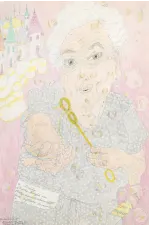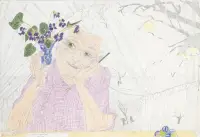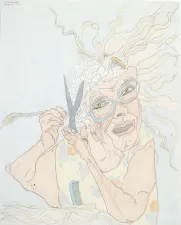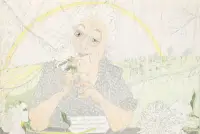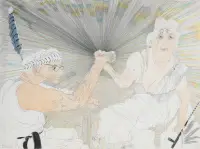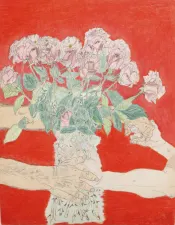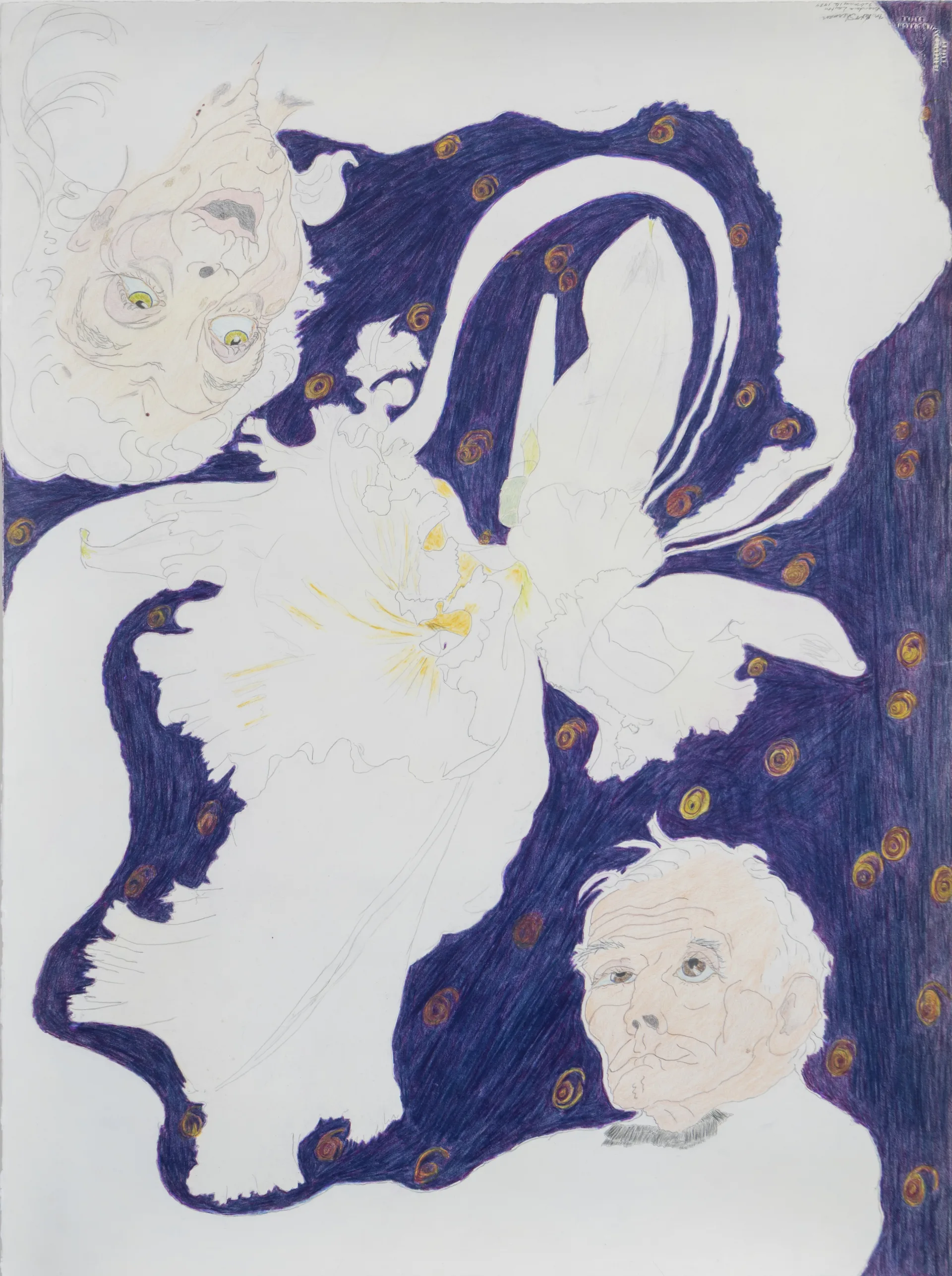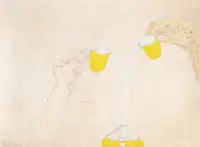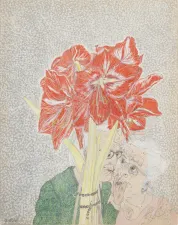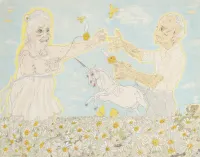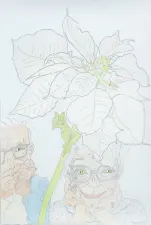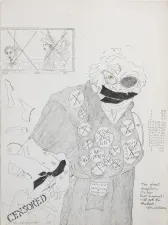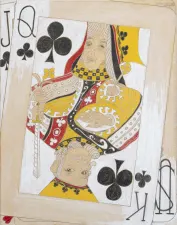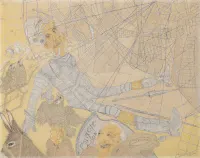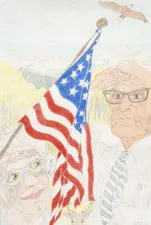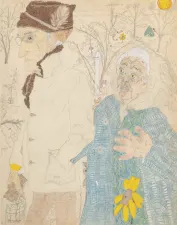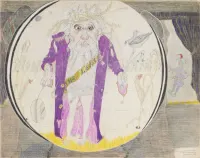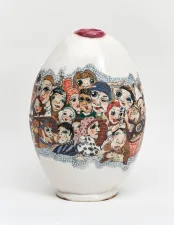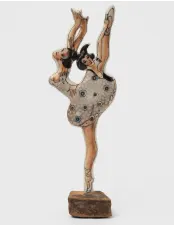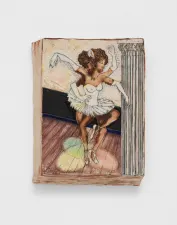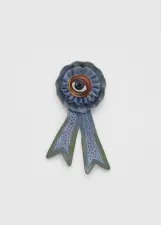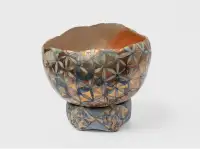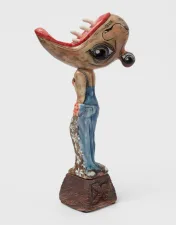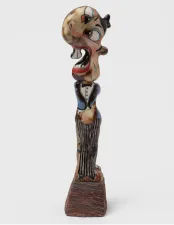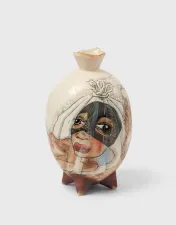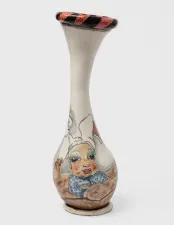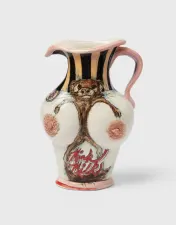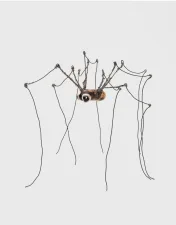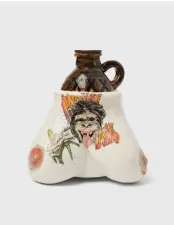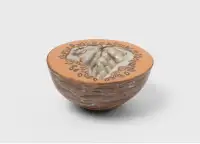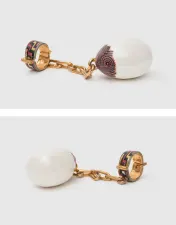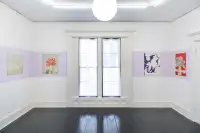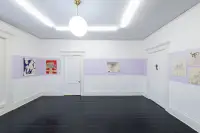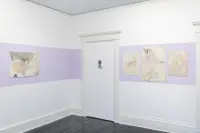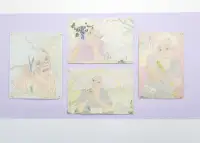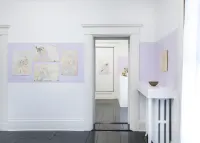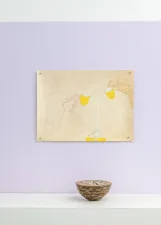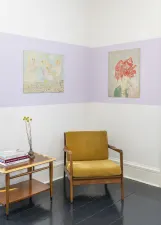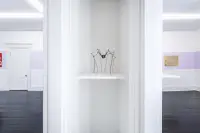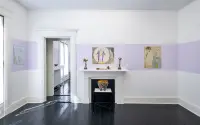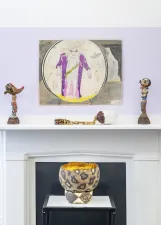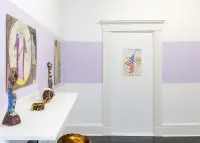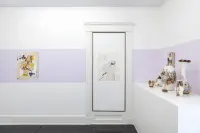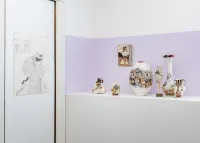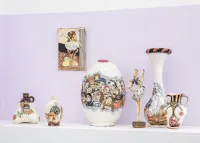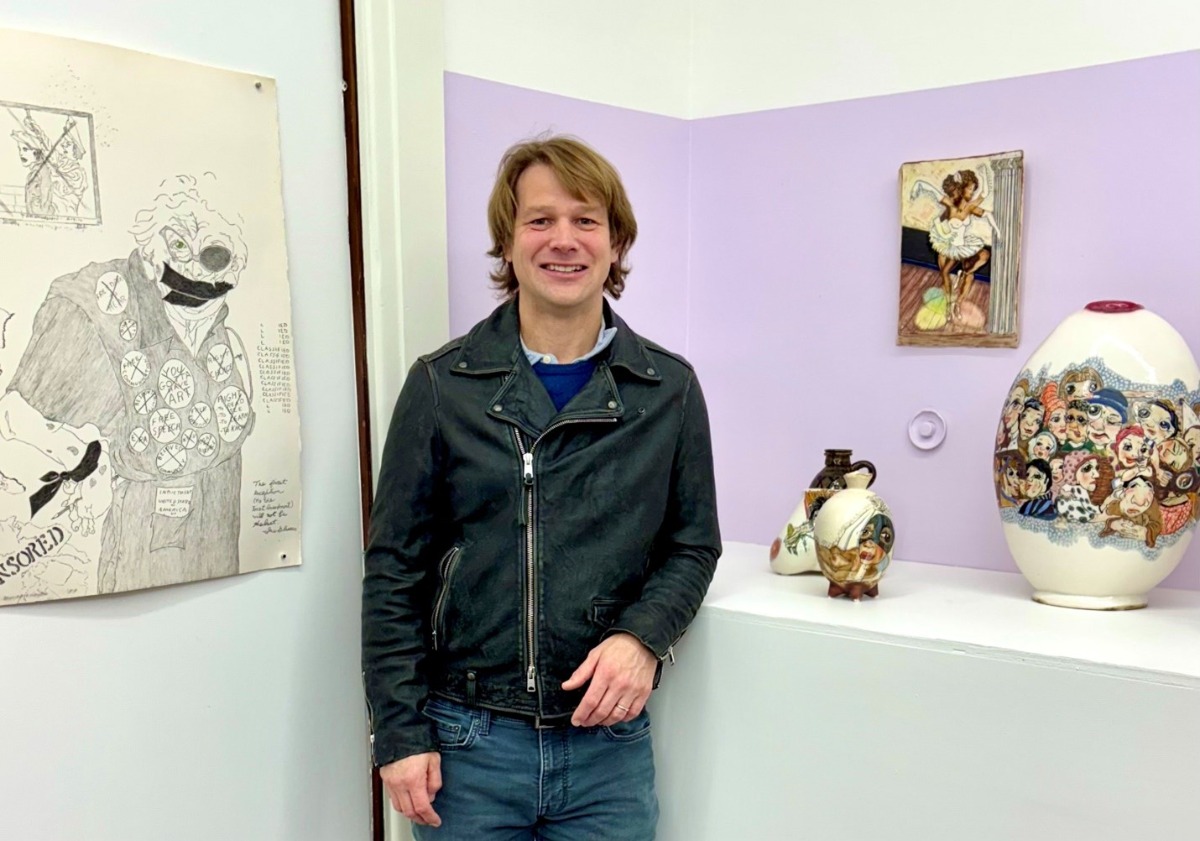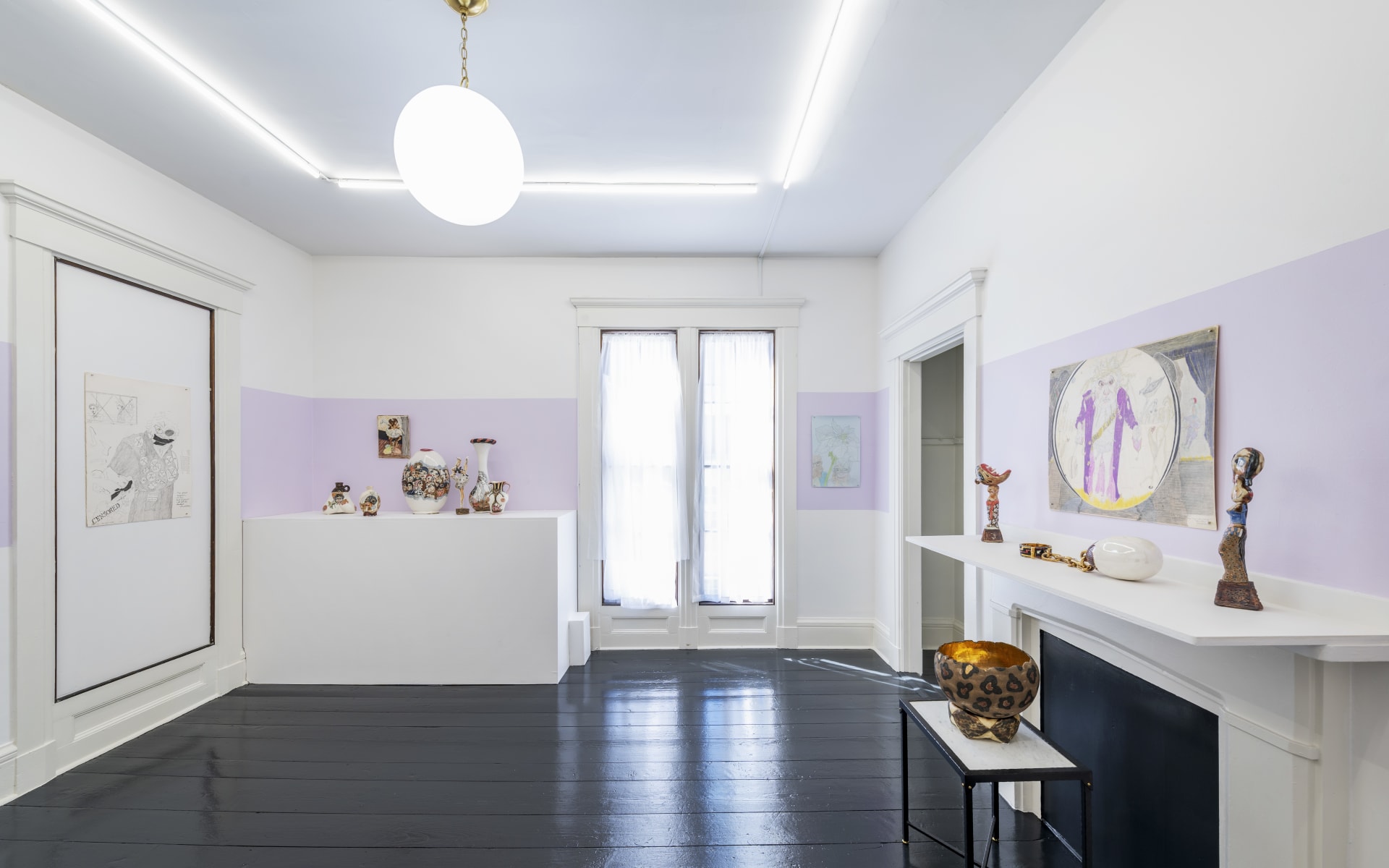Elizabeth Layton & Skuja Braden: Lines That Hold, Forms That Remember
October 4th - December 20th 2025
works
Elizabeth Layton
Elizabeth "Grandma" Layton (1909–1993), was an artist from rural Kansas who began her drawing practice in 1977 at 68 years old, after a suggestion from her sister to pick up a creative practice. With her unique hand, line, and treatment of space in her work, she fine-tuned her craft through repetitive contour line drawing. This process enabled her to express her deepest thoughts and feelings about her personal life, relationships, body, identity, age, memories, and experiences; as well as her liberal socio/political leanings concerning sexism, racism, ageism, gay rights, censorship, and the well-being of the mentally ill, disabled, poor, and oppressed. All topics that are still relevant and at the forefront today. In doing so, she claimed that her art making practice cured her of her lifelong debilitating depression, a feat that no medication or shock treatment she had previously received ever had.
During these 16 years of prolific art making, Elizabeth Layton went from an unknown artist to a nationally recognized one with a brilliant voice. Major museums and institutions began collecting her work including The Art Institute of Chicago, California Palace of the Legion of Honor, Detroit Institute of Arts, Hammer Museum, Metropolitan Museum of Art, Museum of Modern Art, Nelson-Atkins Museum of Art, St. Louis Museum of Art, Whitney Museum of American Art, and numerous other prestigious collections. Her life culminated with a major retrospective at The Smithsonian Museum and glowing reviews nationwide.
Outer Space is beyond grateful to Elizabeth's family and friends, Don Lambert, Judy Cross, Carla Russell, Steven Layton, and Anne Willis for enthusiastically participating in the creation of this exhibition. It's been such a joy befriending and working with you. This exhibition is dedicated to Grandma.
view Elizabeth Layton's public collections
Press
Elizabeth Layton: Drawing as Discourse
Read full story from the Nerman Museum of Contemporary Art
The Diminishing World of the Aging Person: The Art of Elizabeth Layton
Skuja Braden
Skuja Braden is the collective identity of artists Inguna Skuja (Latvia) and Melissa Braden (California), who have worked together since 1999. Their practice begins in porcelain but moves far beyond material, unfolding as an exploration of impermanence, intimacy, and cultural memory. Drawing from literature, decorative traditions, and Buddhist philosophy, their work insists that nothing—neither identity, nor history, nor form itself—is fixed. At its core, the practice of Skuja Braden dismantles the illusion of singular authorship and stable selfhood. Like the porcelain they shape, which hardens only after a long passage through fragility and fire, their art carries the tension between permanence and transience. Porcelain, long tied to refinement and status, becomes in their hands a vessel of contemporary truths: painting collapses into sculpture, chaos into order, the personal into the collective. Their works invite viewers into this state of flow, where ego, authorship, and hierarchy dissolve, thus creating art that is at once rigorous and playful, rooted and fluid—an art that asks us to reconsider not only what art can be, but what identity itself truly is: impermanent, in motion, and always becoming.
Their breakthrough exhibition Samsara (Museum of Decorative Arts and Design, Riga, 2020) established their voice as nationally celebrated yet critically uncompromising, earning the Kilogram of Kulture Prize, a Purvītis Prize nomination, and the Delfi People's Choice Award. In 2022 they represented Latvia at the 59th Venice Biennale with Selling Water by the River, an installation of over 300 porcelain works that transformed porcelain into a medium of urgency, beauty, and disruption. In 2025 they were awarded the Baltic Balva for Visual Arts, affirming their significance across the region.
With over 50 solo shows worldwide—including recent presentations in Guangzhou, New York, Milan, Istanbul, and Zagreb—their work resides in major public institutions and private collections, including The Latvian National Museum of Art, Museum of Applied and Decorative Arts, Latvia, Portland Art Museum, USA, Guangdong Museum, Guangzhou, China, Zuzeum, Janis Zuzans Collection, World Ceramic Center, Korea, Kistefos Museum, Norway, Musée Ariana, Switzerland.
Outer Space would like to thank Kaufmann Repetto for their support in organizing this exhibition.
view Skuja Braden's full biography
Press
Dreams are Ever-Present. A conversation with the artist duo Skuja Braden about the Latvian Pavilion at the 59th Venice Biennale
press
Arterritory.com:
November 24, 2025
One Plus One Equals ThreeA Q&A with Roger Buttles of Outer Space
press
Echo Gone Wrong:
October 22, 2025
Photo reportage from the exhibition "Lines That Hold, Forms That Remember."OUTER SPACE ARTS. October 2025.
At first glance the pairing seems unlikely: Elizabeth "Grandma" Layton, the Kansas artist whose flinty continuous-line drawings became a late-life act of clarity, and Skuja Braden, the Latvia/California duo who build porcelain vessels and figures, then paint them as if paper were curved into air. But the wager here is that line — the simplest instrument — can travel between mediums without losing its intelligence. Read more
Not So Distant: Elizabeth Layton & Skuja Braden
A Comparative Reflection on Shared Intentions and Divergent Expressions
An exhibition at Outer Space Gallery combining the works of Elizabeth Layton and Skuja Braden is a rare curatorial stroke of genius—bringing together two practices rooted in deep feeling, sharp perception, and the refusal to turn away.
Elizabeth "Grandma" Layton and Skuja Braden might look different on the surface—different mediums, different tones, different approaches—but the core of what we do is surprisingly connected: we both make art that tells the truth, with no sugarcoating.
Layton wasn't some quaint outsider. She was politically sharp, painfully honest, and emotionally fearless. She picked up colored pencils in her sixties, thanks to her sister, during a time of deep sorrow. Her drawings are bold and unsparing—she sketched herself old, grieving, angry, joyful, suicidal, sexual. Sometimes she's alive, sometimes she's not. She took on racism, misogyny, the death penalty, aging—always with a matter-of-fact boldness that cut through the nonsense.
She often used herself as a stand-in for others' pain—like drawing herself as a barefoot Black immigrant mother or an old woman nursing her dead son. These weren't just personal stories; they were acts of solidarity. She used her own body as a kind of bridge—what we'd call embodied empathy—placing herself in other people's shoes not to claim their lives, but to witness and honor them.
Drawing became her way back to herself. That daily act of seeing and feeling her own body with her drawing hand shifted something in her. It lifted the depression. It let her rewire her inner world. She wasn't just drawing her body—she was reclaiming it.
Like Layton, we also work from life—our lives, the systems we've wrestled with, the symbols that surround us. But instead of colored pencil, we use porcelain. Where Layton's drawings are intimate and spare, our sculptures are full, theatrical, and alive with contradiction. We mix softness with violence, the sacred with the absurd, protest with sensuality.
Layton used her image directly. We tend to embody our experience through more symbolic, hybrid forms. Our pieces hold multiple identities at once, refusing to simplify. That's our version of embodied empathy—not putting our faces into the work, but pouring our whole selves into the form.
We build sculptures that are devotional and defiant, sacred and sly. Our work is full of myth, memory, humor, and love. It's a collaboration between two people, two voices making one vision. We fold in references to art history, pop culture, and our own lesbianlives. And through all of it, porcelain is our co-conspirator: fragile, persistent, and incredibly alive.
Pieces like Cock Block, Flower Power, and Finger Brush aren't just jokes or statements—they are physical, emotional, layered embodiments of meaning. The drawings on Laced Pot, for example, come straight from our bodies. These aren't sketches—they're sensations. When we draw, we feel it. When we sculpt, we breathe into it. Our hands remember everything.
Our whole practice is built on holding tensions: between beauty and critique, devotion and mockery, chaos and control. We're always moving between opposites, and in that space, something else emerges—something not quite one side or the other.
Take the Trump piece: we made him a cartoon villain, head blown apart by a thought bubble with a hand holding a porcelain gun. It's not a threat. It's a critique of how ideas—especially violent ones—take hold. Or our Snow White piece: we swapped the poisoned apple for a banana, glazed and drawn on porcelain, stuck right in her mouth by the wicked stepmother. Suddenly, you're not just thinking about fairy tales—you're thinking about shame, power, and the absurd wayinnocence gets weaponized.
Then there's Finger Brush—a hairbrush made of porcelain fingers, stamped with "BANG." It's part joke, part protest, part love letter to autonomy. It's about pleasure as power.
Our work makes people laugh—and then think. It's funny, but never frivolous.
Unlike Layton, whose raw honesty got mistaken for amateurism, our technical skill sometimes gets used against us. We're told our work is too beautiful to be serious, too decorative to be political. That's backwards. In what other field is being excellent at your craft used to question your intent? For us, mastery is about care—it's how we honor what matters.
In Latvia, people have called our work kitsch—not because it is, but to put us down. Not like Jeff Koons, who plays with kitsch for irony and cash. We're not riffing on balloon dogs or greeting cards. We're making from the gut—from memory, from experience, from the sharp and the soft. When they say "kitsch," they're trying to make us small.
On Process, Perception, and the Institutional Gaze
Layton drew every day. After about six months, she said her depression began to lift. Seeing herself honestly, without flinching, changed how she felt inside. Drawing wasn't an escape from grief—it was a way to move through it.
But when she shared that truth, institutions brushed her off. They called it "art therapy." As if her work wasn't smart, deliberate, and incredibly precise. As if it didn't matter.
We know that feeling. Our work gets called "confessional," "too much," "emotional." As if feeling things deeply disqualifies it from being real art. As if care and craft can't exist in the same room.
She used colored pencil. We use porcelain. Both are seen as soft, domestic, not serious. But we use them to say what others don't. To give shape to things that are hard to hold. To remind people that beauty can carry a punch.
She wasn't trying to "heal." She was telling the truth. That's not therapy. That's art.
Closing Reflection
This show doesn't pair us because we look alike. It pairs us because we insist on truth. We make work that helps us survive. We speak about things that matter. And we don't separate the personal from the political.
Layton drew herself back to life. We sculpt to hold the weight of being.
Our work may look different, but it comes from the same place: the body as archive, witness, terrain. This isn't art that looks away. This is art that stays. That sees. That insists on being here.
